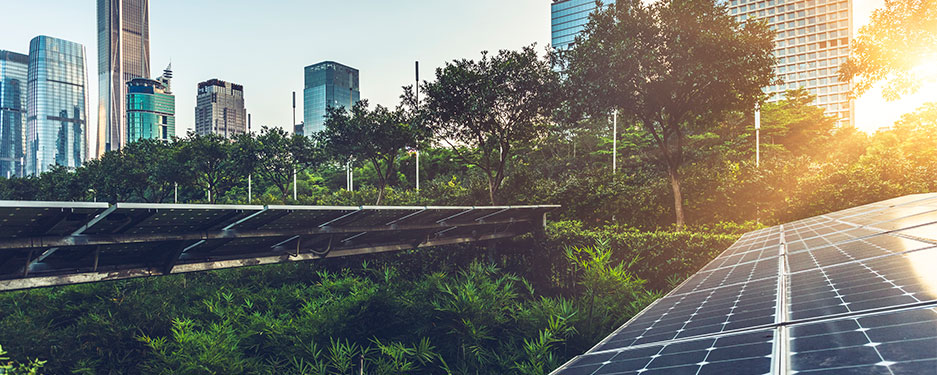
Air pollution has reached new unhealthy levels in Hanoi & Ho Chi Minh City (HCMC) over the past few weeks. As both cities are taking a range of measures to ease the situation, could commercial real estate assist in lessening this epidemic? What lessons can buildings take from countries already tackling air pollution?
Air pollution is a global issue. Data shows that 91% of the world’s population resides in locations where air quality exceeds the WHO guideline limitations. Countries are closely monitoring air pollution at local levels and working to improve air quality. More than 4300 cities in 108 countries are now included in WHO’s ambient air quality database, making this the world’s most comprehensive database on ambient air pollution.
The UK for example issued the ‘Clean Air Strategy 2019’, setting out comprehensive actions required to enhance the quality of air, addressing emissions from transport, home, farming, industry and commercial properties. This strategy enables local authorities to determine operation thresholds for commercial property owners. To encourage energy efficiency, the UK Government has introduced ‘The Green Lease Toolkit’, an initiative which aims to assist property owners and occupiers in establishing carbon, energy and waste reduction strategies to minimize environmental impact.
Environmental awareness in real estate has become an integral part of the growing impact investing trend. According to Lucy Auden, Global Head of ESG (Environmental, Social and Governance) at Savills Investment Management, impact investing has the specific intention of creating social or environmental impacts in addition to the more traditional financial returns.
According to Fitch Ratings, assets in the sector rose 15 per cent to $52 billion during the first quarter of 2019, showing the rapid growth of ESG. The Global Impact Investing Network (GIIN) estimates that this impact investing market is now worth $520 billion.
Ms. Auden added: “Environmental issues and climate change are already on the minds of real estate investment managers. Rather than saying, “I’m going to buy this green building as something that is ‘nice to have’,” the industry is starting to think: “If I buy an inefficient building and plan to do nothing to improve its resilience and efficiency, am I going to be able to sell it? With climate concerns on the rise, is there going to be a buyer in 15 to 20 years who are willing to take on unmitigated climate-related risks?”
“The bricks and mortar element of the real estate sector makes it much more at risk to physical climate changes. The built environment is also responsible for 40% of global carbon emissions, meaning there are also huge opportunities to reduce global emissions. The mitigation and adaptation of climate change both hinge on real estate assets in a massive way,” said Auden.
In Vietnam, impact investing has begun in commercial properties. Developers and landlords are investing in measures to maximize building efficiency, reduce energy consumption and emissions.
According to Ms Hoang Nguyet Minh, Associate Director, Investment Savills Hanoi, several commercial developments in Vietnam have achieved or aligned with a variety of green and energy certificates, among which LEED (Leadership in Energy and Environmental Design) is probably the most globally recognized.
Some of the most prestigious international Grade A office buildings in Hanoi and Ho Chi Minh City are expected to meet these requirements.
According to Ms Minh, “Capital Place in Hanoi is targeting LEED Gold certification and has incorporated all requirements into construction and design. The international Grade A office development is committed to reducing water consumption by 50 per cent via recycling, and lower energy consumption by 13 per cent through efficient building management. Filters, low-emitting materials and sensors are installed to maintain good air quality indoors and reduce emissions, while the vertical greening of feature screens along the project periphery helps to improve exterior air quality.”
Similar energy-saving initiatives are found in Friendship Tower in Ho Chi Minh City – another LEED Gold candidate.
Ms. Tu Thi Hong An, Associate Director, Commercial Leasing, Savills HCMC said: “This boutique Grade A office development has taken measures to reduce utility consumption and has achieved an 85 per cent decrease in water usage due to efficient fixtures, recycling and rainwater collection systems in addition to a 33 per cent reduction in energy after installing HVAC and LED-lighting systems. Friendship Tower also reduces concentrations of chemical contaminants that can damage air quality, human health, and the environment by using low-emitting materials for the building interior.”
With the Government under increasing pressure to address the pollution crisis in Hanoi & HCMC, business-led environment strategies will become commonplace in the commercial property sector. Collective action between real estate developers, construction, industrial production, farming and transport will play a significant role in ensuring healthier air quality.

















